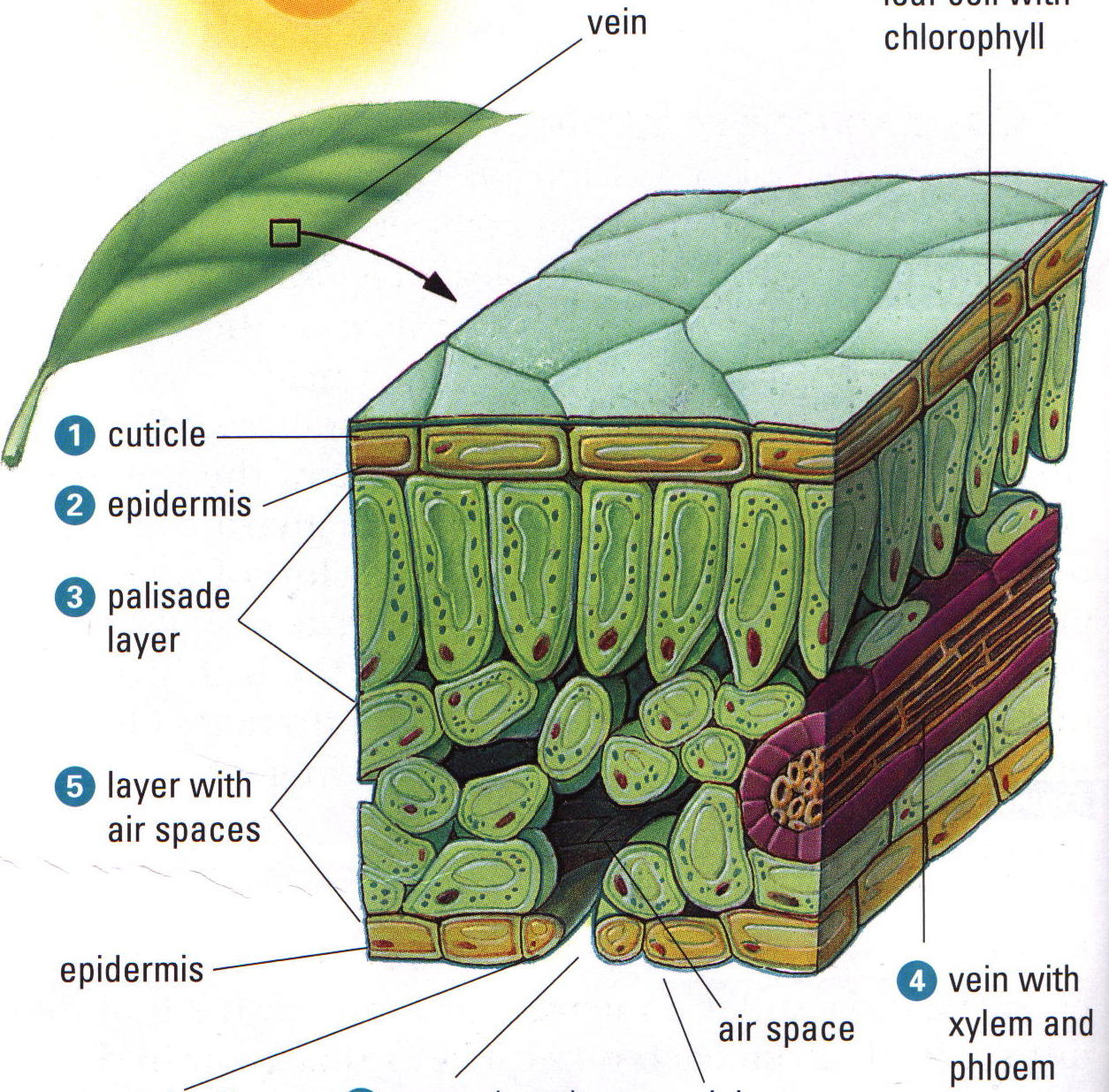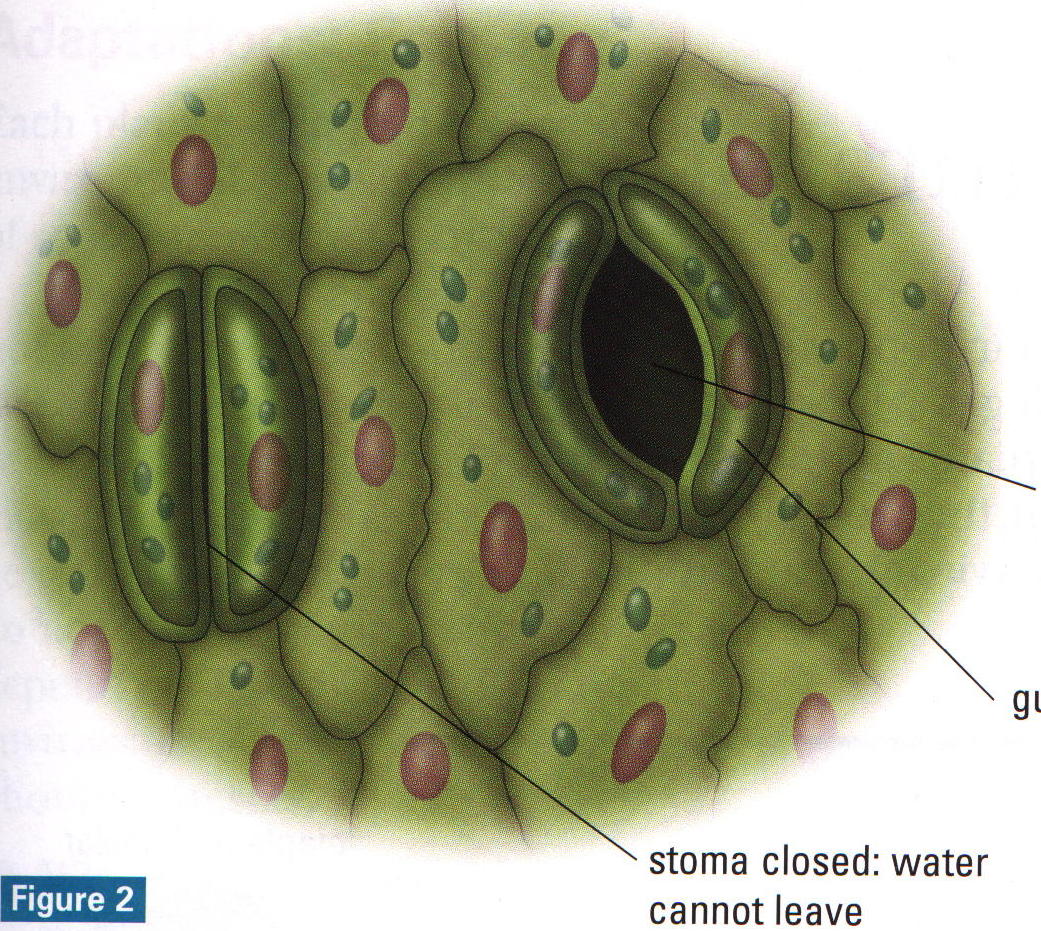


1. Protection: The cuticle-----The cuticle is a coat of wax that covers the leaf. The cuticle prevents the leaf from drying out
2. Protection: The Epidermis-----The leafs epidermis protects the cells. These cells make the waxy cuticle. Epidermis cells don't have no chloroplasts so they cannot perform Photosynthesis.
3. Photosynthesis: The palisade-----It is a layer under the cuticle and epidermis. Palisade cells contain many chloroplasts the organelles that trap light for photosynthesis.
4. Transport: The Veins-----The Vein is a combination of xylem and phloem vessels. Xylem carries water from the roots to the leaf. phloem carries the sugar and starch made in the leaf to other plant cells for food and to the roots for storage.
5. Gas Exchange: Inside the Leaf-----under the palisade cells, many leaves have a spongy area with fewer cells and many air spaces. Photosynthesizing cells absorb carbon dioxide from the air spaces and release oxygen into these spaces.

6. Gas Exchange: Inside and out-----In plant cells inside the plant cells leaf's need carbon dioxide from the air. The oxygen gas made in photosynthesis must leave the leaf. The air spaces allow free movement of these gases.